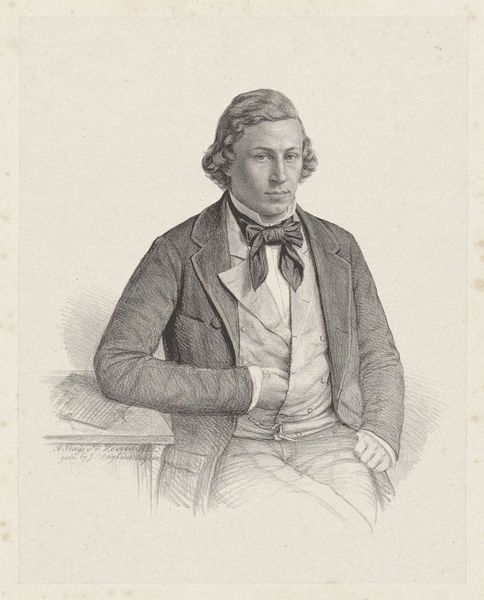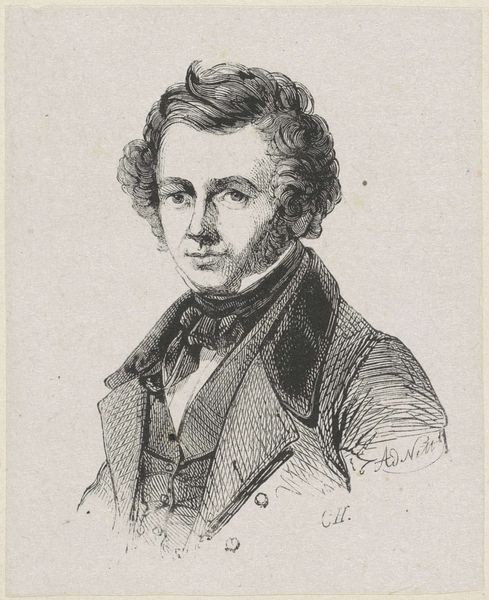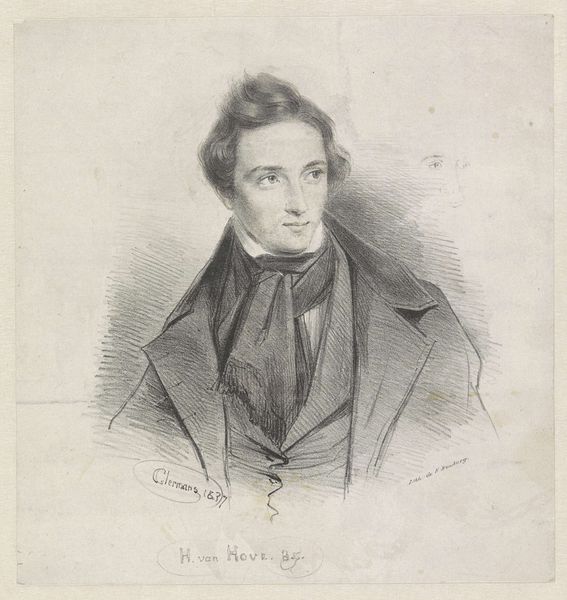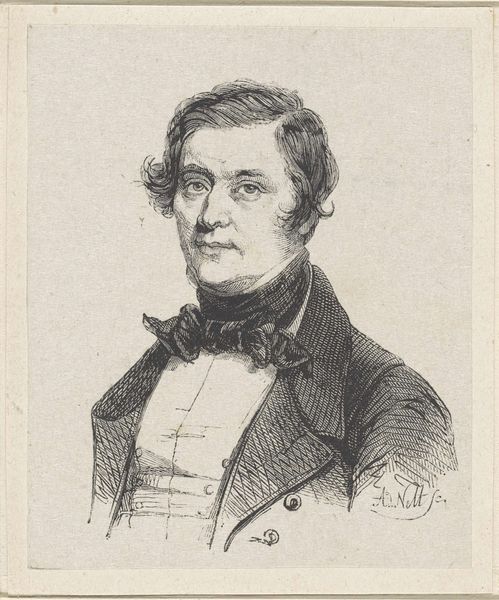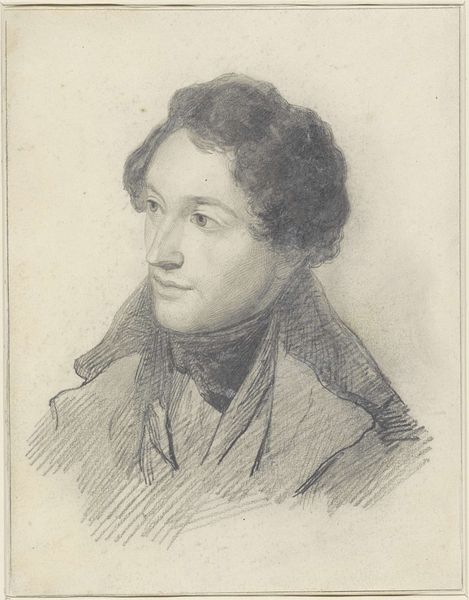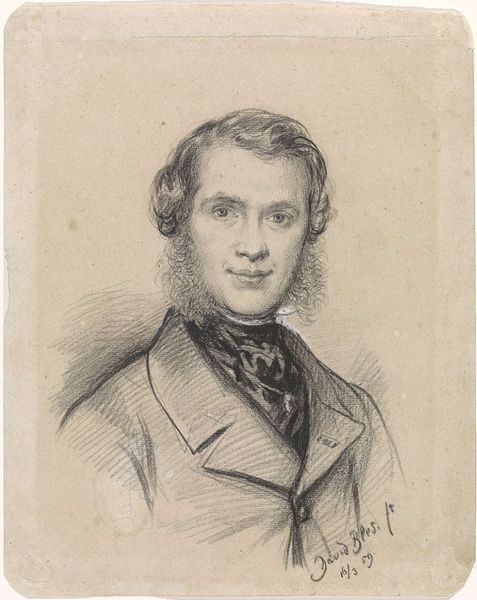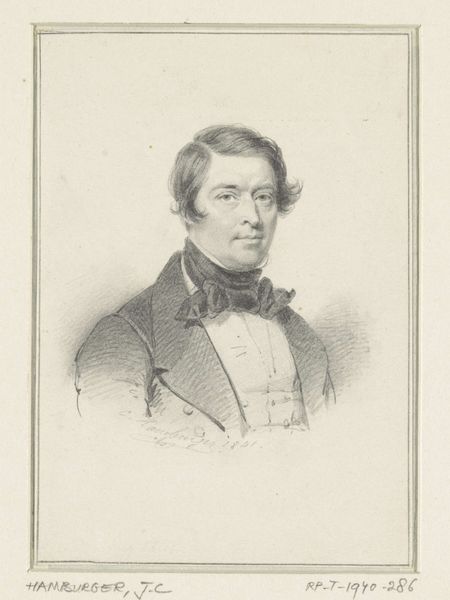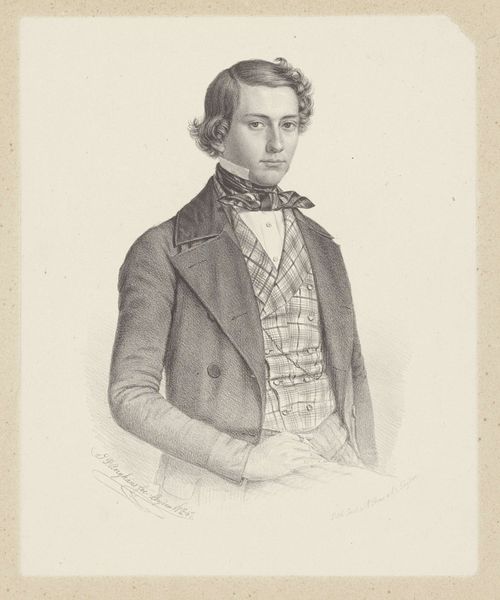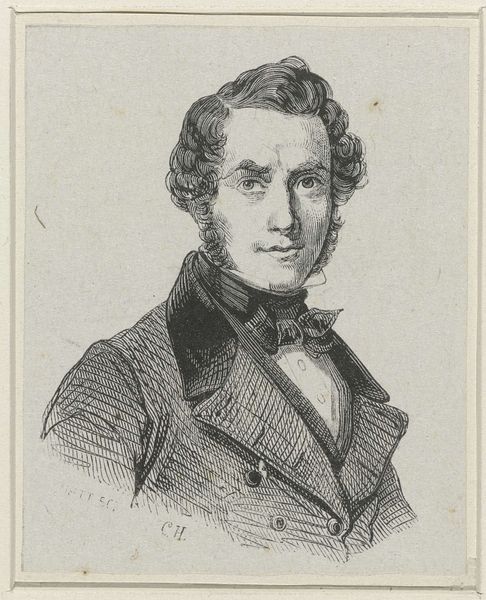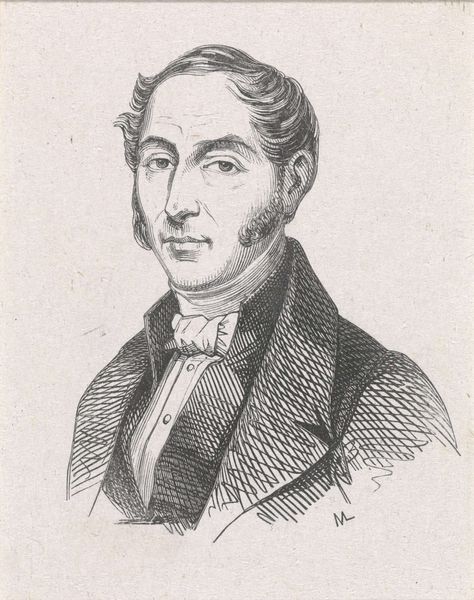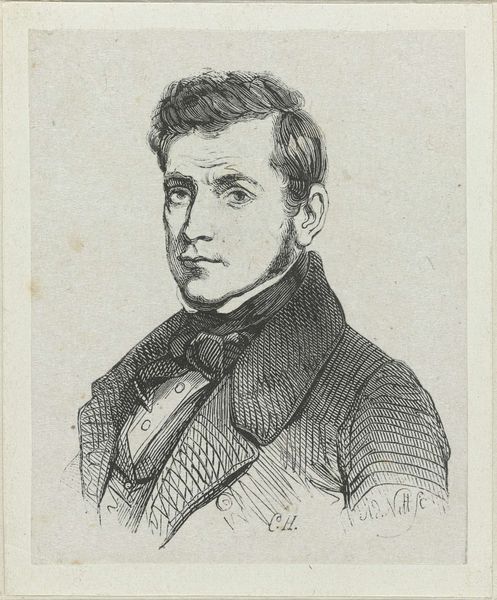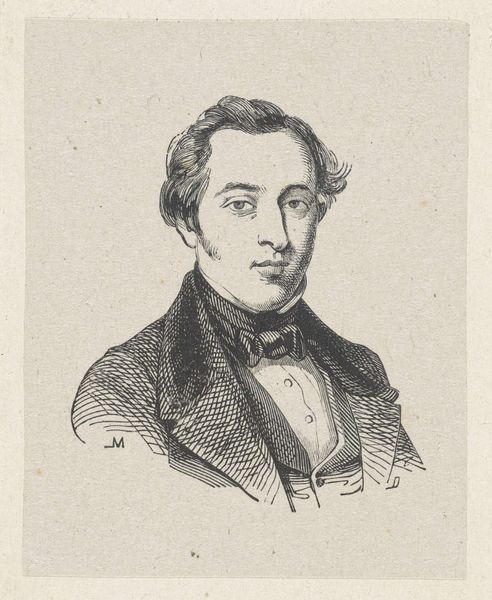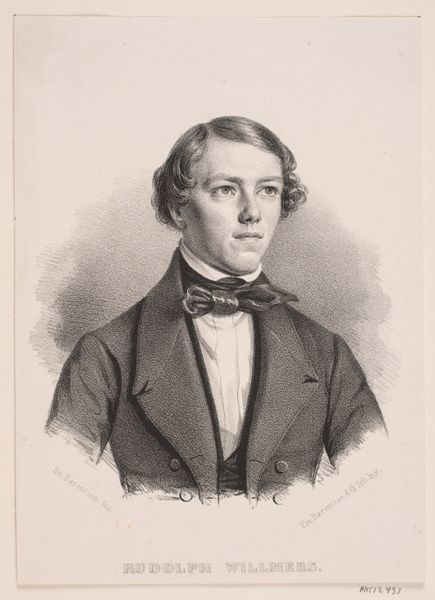
drawing, pencil
#
portrait
#
drawing
#
self-portrait
#
figuration
#
pencil drawing
#
romanticism
#
pencil
Dimensions: height 120 mm, width 88 mm
Copyright: Rijks Museum: Open Domain
Curator: Let’s take a look at "Zelfportret van Frederik Lodewijk Huygens," a pencil drawing dating from 1822 to 1842. It's currently housed here at the Rijksmuseum. What are your initial thoughts? Editor: There's a captivating softness to the work, mainly in the rendering of light on his face and hair. The meticulous hatching and cross-hatching give volume and a sense of quietude. Curator: Considering the historical context, Romanticism was in full bloom during this period. The focus shifted toward individualism and introspection. Huygens, within the broader societal changes occurring at the time, places himself as a bourgeois man in a time when that class was attaining more social power. Editor: Absolutely, and the formal elements amplify this individualism. The emphasis on light and shadow sculpts the form, and it all comes down to a visual tension. The slight asymmetry gives it vitality. Curator: Right, the asymmetry complicates the message that he is someone in command and in control. The subject, the artist, stares directly out, meeting the viewer's gaze. During this era there was great concern about how class and gender shaped that "gaze". He, in viewing himself and then displaying himself to the viewer, makes a statement of being worthy of viewing. Editor: The materiality of pencil on paper creates an intimacy – like a private glimpse into a quiet moment. And the scale is relatively small. It all points to the creation of a personal visual field. Curator: I agree. There's a subtle defiance there, too, of traditional, often larger and more grandiose portraits, and even oil-painted ones, displayed to emphasize aristocratic power. The bourgeois can and will now self-portray, even if in a small medium and drawing, like pencil on paper, using figuration but on their own terms. Editor: Indeed. Focusing on the formal, on the relationship of light and shadow to volume, and the immediacy of the medium gives an entryway to a more comprehensive vision of art as part of society. Curator: Examining the portrait reveals not just artistic technique, but how individual identities were being shaped by societal transformations and cultural attitudes about gender and class. Editor: And seeing how those identities played out via artistic choices, we gain a greater understanding of social power structures and artistic intent in our history and even today.
Comments
No comments
Be the first to comment and join the conversation on the ultimate creative platform.
